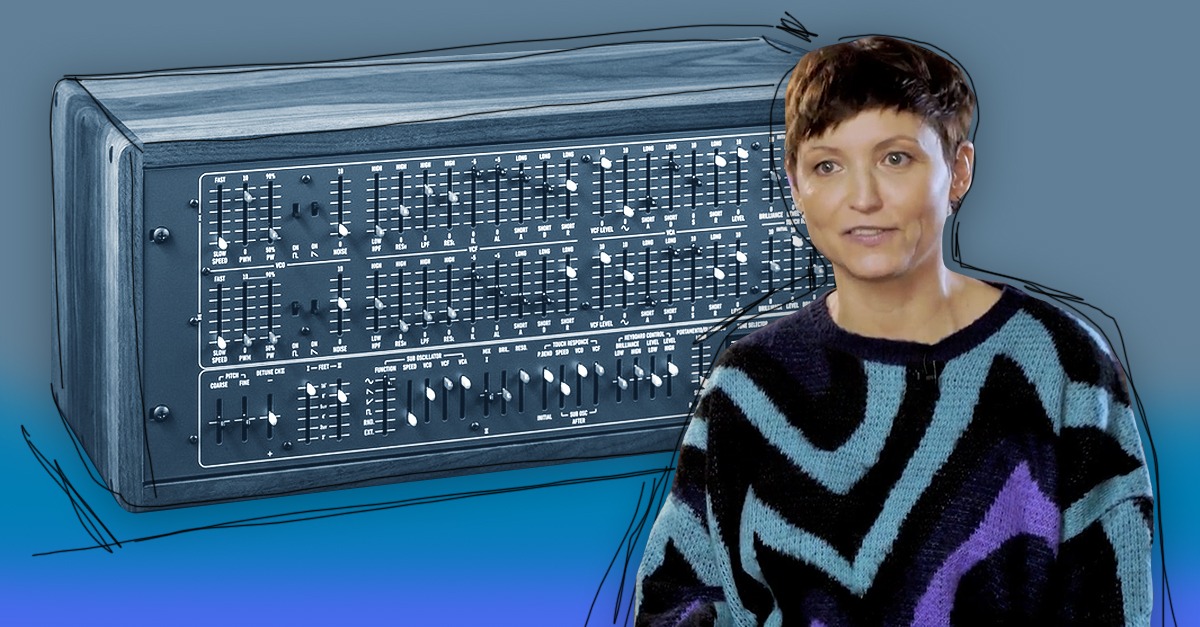Rare Gear: Diving Into Deckard’s Dream With Magda

Hardware synths produce an incredibly powerful sound that’s hard to ignore.
Who doesn’t love twisting a knob and hearing it change the sound with an analog electric signal, in real-time?
If there’s one synth that should be on your radar, it’s the Deckard’s Dream from Black Corporation.
Deckard’s Dream is inspired by the iconic Yamaha CS-80 synth that was used in tons of classic tracks and even the Blade Runner soundtrack.
It’s about as close to the original CS-80 as you can get without shelling out for a vintage synth.
We were lucky enough to get a demo of the synth from Berlin-based electronic producer Magda.
As you can see in Magda’s video it’s a powerful way to create fascinating sounds
View this post on Instagram
Here’s what we discovered about the Deckard’s Dream.A portable CS-80?
The Yamaha CS-80 is a legendary synth for good reason. It’s a favorite of pioneering synthesists like Vangelis and Jean-Michel Jarre.
The synth is known for introducing some incredible sound design features that are still unique to this day.
Its ribbon pitch controller allowed musicians to create unprecedented glissando effects and haunting vibrato.
It was also the first synthesizer to include fully polyphonic aftertouch. This feature lets you control synth parameters like filter cutoff or VCA level by varying the pressure you apply to the keys as you hold them down.
Even with those unique abilities, the CS-80 is mostly prized for its incredible analog sound. It was by far the most powerful synth of its time when it debuted in 1977.
But all that power came at a huge cost. The CS-80 retailed for $6,900 USD in 1977—that’s nearly $30,000 in today’s money!
Vintage units are only climbing in price due to their age and rarity.
On top of all that, the original CS-80 was physically enormous at 220 lbs and was notoriously difficult to keep in tune.
Synth fans have been searching for a way to get the legendary tone of the CS-80 without paying the price of a new car and devoting an entire room to accommodate it.
That’s where Deckard’s Dream comes in. DDRM gives you the authentic sound and expressiveness of the CS-80 with all the conveniences of a modern synth.
Let’s check it out.
Working with eight-voices
Deckard’s Dream is an eight-voice analog synth, meaning that it can play up to eight notes at once.
But these eight voices go through two separate signal paths with identical oscillators, filters, and amp envelopes that can be layered against each other.
The oscillators on each signal path come with square and sawtooth waveforms and impressive pulse width modulation that essentially works like an LFO on the waveform.
The filter section of each signal path comes with high pass and low pass filters with corresponding resonances. It also includes settings for ADR on the filter.
In the VCA section, you’ll find controls for ADSR of the overall signal, and the level of ADSR.
At the end of the synth signal, you’ll find the touch response which controls velocity sensitivity and polyphonic aftertouch.
The touch sensitivity controls allow for increased experimentation and are key for creating psychedelic Blade Runner-esque modulation.
“It has eight voices and two layers so you can really get deep with filters and modulations. It has a very beautiful sound about it–very analog.” – Magda
Layers of opportunity
Keep in mind that every part of the synth signal, from the oscillators to touch sensitivity is doubled.
That means you can create two completely different sounds, and then send the eight voices through both signal paths and blend between them.
This is the coolest part about creating sounds with the Deckard’s Dream.
The layering function allows you to mix between two completely different signal paths, essentially blending two separate synths into one sound.
The Deckard’s Dream’s mixing capabilities create near-infinite possibilities to create unique sounds.High performing
Where the Deckard’s Dream really starts to shine is in its performance section.
This is where you’ll find the mixer that layers between both signal paths, but you’ll also find global LFO, pitch, scale, touch response, and portamento parameters.
The performance section is the part of the system that controls the sound of the entire synth and as its name suggests it will drive how exactly you use the synth in a performance.
Working between the LFO and the scale settings, which are measured in “feet”, you can create some mind-blowingly strange and interesting sounds.
When played by an expert, you can hear just how interesting and weird the Deckard’s Dream can get.
For example, there’s a handful of interesting Deckard’s Dream samples in Magda’s sample pack.
Or check out how John Tejada regularly uses it in his tracks.
“It’s become one of my favorite pieces to use in a live show because it has so many different possibilities.” – Magda
Is the Deckard’s Dream for You?
Powerful analog synths like these sound amazing, but they come at a cost. In this case, the newest model of the Deckard’s Dream retails for $3,749 USD.
Even if that’s considerably less than what a vintage CS-80 goes for, it’s still a hefty price tag!
Your cheapest option, if you really want the sound of the Deckard’s Dream, is to go through Magda’s sample pack and use the cool Deckard’s Dream samples she recorded in your track.
Otherwise, a synth VST emulation of the vintage Yamaha CS-80 can approximate the original sound of the CS-80.
Hardware synths are cool
There’s something special about the feeling of twisting a knob and hearing it manipulate a synth’s sound in real-time.
You don’t need to look at computer screens or DAW timelines, just a set of knobs, maybe some piano keys and time dedicated to experimentation.
Recreating the iconic synths of the 70s and 80s is a big trend in the synth world right now, so many manufacturers are making them right now.
From Korg’s new ARP 2600, Behringer’s Odyssey or Roland’s boutique series there’s plenty of classic synths making their way back onto the shelves of music stores near you.
Just remember, if you’re on a budget for your home studio, you always can find a sample pack or VST that replicates those classic sounds!
Gear guides, tips, tutorials, inspiration and more—delivered weekly.
Keep up with the LANDR Blog.
Latest posts

